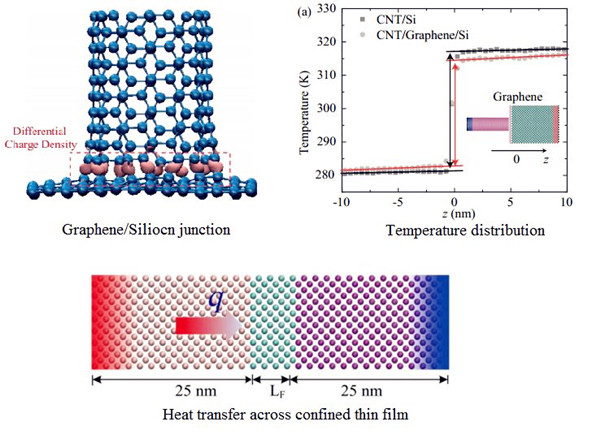The University of Michigan- Shanghai Jiao tong University Joint Institute (UM-SJTU JI) graduate student Cheng Shao has been awarded the 2014 AMD Scholarship for High Performance Computing. Jointly sponsored by Advanced Micro Devices, Inc. and the Center of High Performance Computing (HPC) at SJTU, this annual award recognizes five SJTU graduate students for their outstanding research work utilizing the high performance computing resource of the HPC.

Due to the continuously shrinking feature size of devices and the increase in clock speed, the power density in computer chips has grown exponentially and the efficient heat removal from the chips has become one of the most critical issues for the further development of the semiconductor industry. However, heat transfer at the nanoscale is distinctly different from that predicted by the classical laws. Therefore, a deeper understanding of heat transfer across interface and nanoscale thin films is urgent and meaningful for the thermal management of electronic devices.

Traditionally, very complex optical-based methods are used to characterize the thermal properties of the interfaces and nanoscale thin films. Usually these experiments are very expensive and difficult to carry out. The development of high performance computing technology makes it possible to study the underlying physics of heat transfer at nanoscale through numerical methods. Since October 2013, the Nano Energy Group led by Professor Hua Bao has collaborated closely with the High Performance Computing Center at SJTU (ranked 158 among the top 500 supercomputers worldwide). Under the supervision of Professor Bao, Cheng Shao has carried out a series of numerical study on heat transfer across interfaces and thin films and has obtained good results. For interfacial heat transfer, Cheng Shao and his team members proposed a novel graphene-nanotube junction to enhance the heat transfer at a Carbon Nanotube (CNT)/Silicon interface. The numerical simulation results show that the interface thermal conductance can be enhanced by at least 40% through the novel junction structure, and this work was published at the Journal of Applied Physics in 2014 (link). Cheng Shao has also conducted a systematical study on the heat transfer across a confined thin film, which has clarified the underlying physics of heat transfer across a confined thin film and provided an easy way to estimate the net resistance across a confined thin film. This work has been published in the International Journal of Heat and Mass Transfer recently (link).





